
 |
|
|
Nursery & Forest
Volume 58 Number 11 Date 07/18/2013 TAR SPOT - The pale yellow lesions appearing on Norway maple leaves in Green Lake and Waukesha counties are early symptoms of tar spot, a cosmetic fungal leaf spot disease. Severely infected foliage will soon develop raised, black, tar-like spots and may drop prematurely. Tar spot is an aesthetic disease best controlled by clearing and destroying infected leaves in fall to prevent the spores from spreading. If treatment is warranted, three fungicide applications are necessary for control: one at bud break, one when leaves are half expanded, and one when leaves are fully expanded. BRONZE BIRCH BORER - Nursery inspections in Price County detected the D-shaped exit holes associated with this wood-boring beetle on the trunks of whitespire birch trees. Adult bronze birch borers infest trees weakened or stressed due to drought, disease, sun exposure or nutrient deficiency. Larval feeding beneath the bark results in the girdling of branches and stems. Infested trees also develop swellings or bumps on the trunk around the feeding tunnels. Immediate removal and destruction of infested birch is recommended since this insect kills its host within just a few years. VENTURIA SHOOT BLIGHT - Quaking aspen at nurseries in Green Lake and Jefferson counties are showing the black, blighted shoots indicative of this fungal disorder. The initial symptoms appear in May as irregular brown or black spots on the leaf surfaces, which later expand to new shoots and cause the characteristic shepherd's crook. Secondary infection cycles can occur throughout the shoot elongation period, particularly during extended periods of wet weather. The fungus overwinters in infected shoots, so pruning blighted shoots below the margin between healthy and diseased tissue is recommended. SPRUCE NEEDLE RUST - Nursery inspectors noted this rust disease on Colorado blue spruce trees in Price County. The symptoms are orange, powdery spores that appear on the undersides of current-year needles. Spruce needle rust has two hosts, alternating from Labrador tea to spruce in spring, and from infected spruce to Labrador tea in summer. Infected needles turn yellow and fall off by the end of the growing season. In most instances, this rust is an aesthetic problem and no control is needed. Removal of all alternate host plants within 1,000 feet will reduce disease on spruce, but is usually impractical. -- Liz Meils, DATCP Nursery Inspector 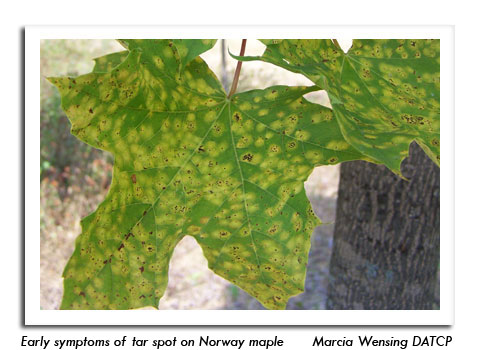
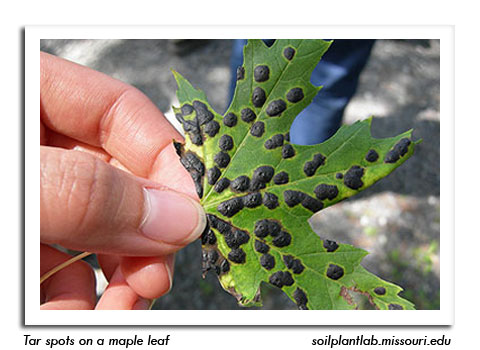
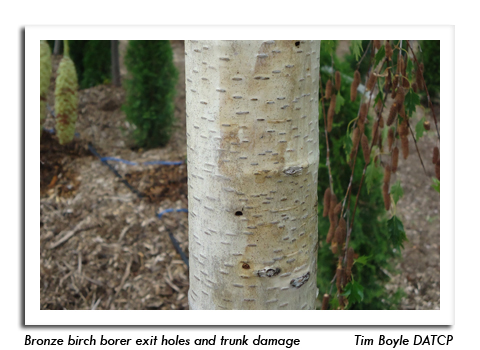
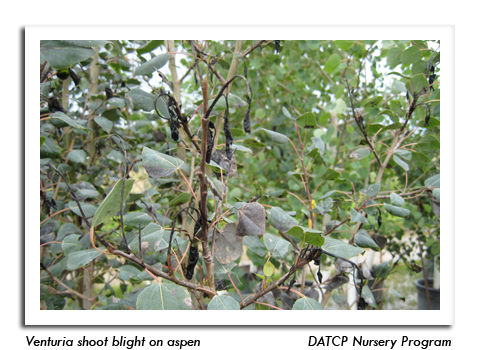

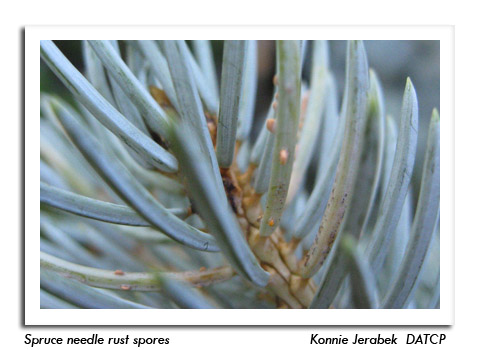
|
|
|